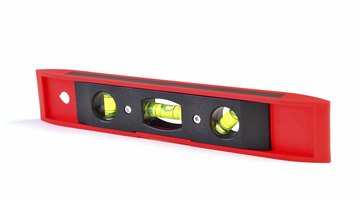What Is a Torpedo Level?
Every well-stocked toolbox should contain a torpedo level. You most often use this particular spirit level, a smaller cousin of the carpenter’s level, when you are working in tight, cramped quarters and need to measure for true horizontal or vertical.

The basic model works well for simply tasks, such hanging a picture, but if you need a reading over a long distance or a precise angle measurement, switch to a model with enhanced features.
Standard Design
The rectangular body of a torpedo level, typically made of aluminum or plastic, features slightly tapered ends. Its length can vary between 6 and 10 inches. Most contain two to three vials or spirit tubes. These vials contain a clear liquid and an air bubble, and have two parallel lines drawn around their center. Torpedo levels with only two tubes are used to determine true horizontal or vertical -- level or plumb. A level with a third tube set on a 45-degree diagonal is used to check for a 45-degree angle.
Design Upgrades
A magnetized top and bottom edge on high-end torpedo levels allows for a hands-free reading on metal surfaces, which can come in handy when you work with pipes. Another upgrade includes a laser beam, which allows you to take a reading over a long plane. Some laser designs also have a digital display, which shows you the exact angle measurement.
The Drip Cap
- Every well-stocked toolbox should contain a torpedo level.
- The basic model works well for simply tasks, such hanging a picture, but if you need a reading over a long distance or a precise angle measurement, switch to a model with enhanced features.
- The rectangular body of a torpedo level, typically made of aluminum or plastic, features slightly tapered ends.
References
Photo Credits
- Sally Scott/iStock/Getty Images
- Sally Scott/iStock/Getty Images
More Articles



